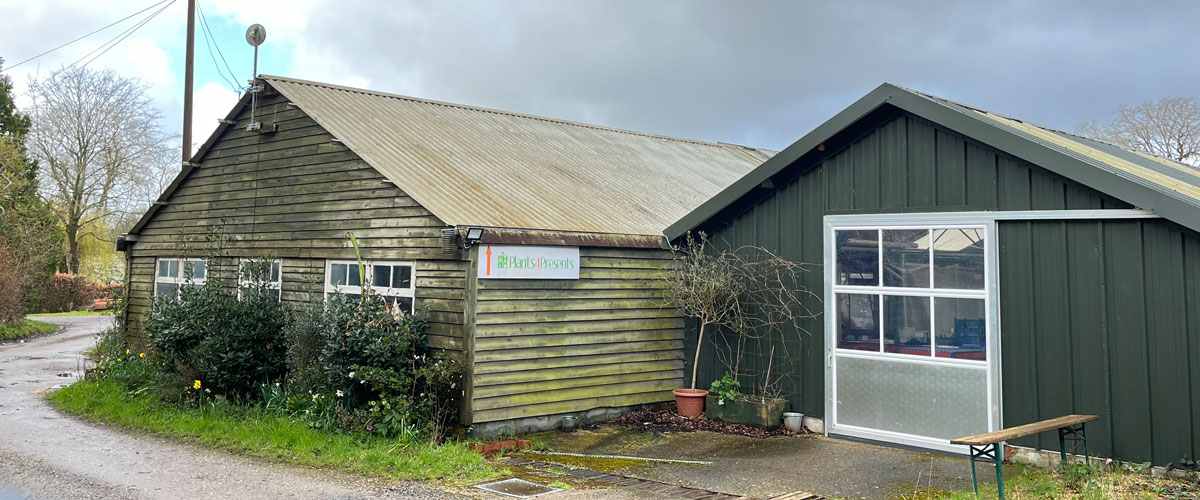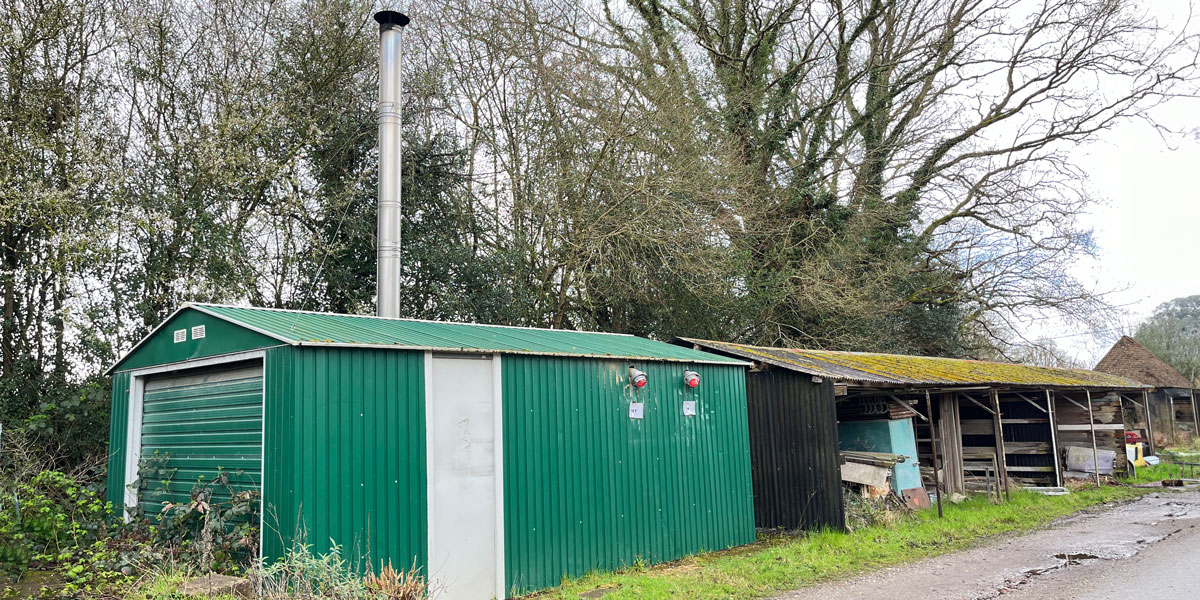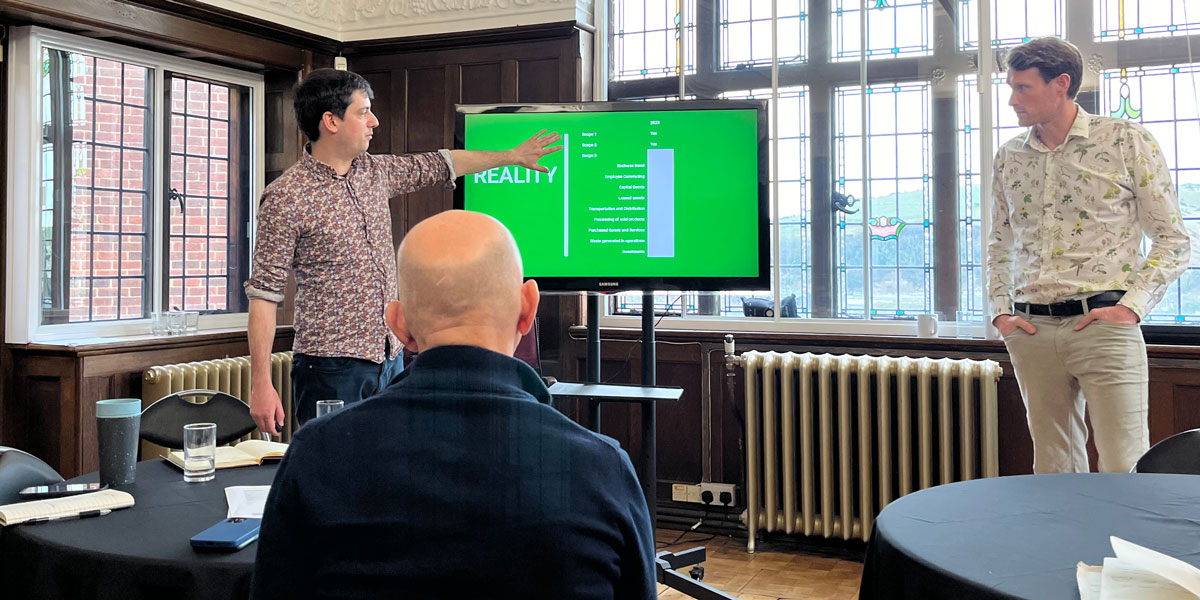We're committed to reducing our carbon footprint.
As an ethical business we are committed to doing our part in reducing our impact on the environment. As part of that we have started actively reducing our carbon footprint and set ourselves the almighty task of achieving NetZero by 2030.

For a small business like ours, keeping tropical plants warm and healthy in leaky old greenhouses this is a big challenge but one we are excited to take on.
We hope by documenting our journey we will inspire other small businesses and horticultural businesses to take the plunge. There are over 5 million small business in the UK and if we all reduced our carbon emissions by just 20% this year imagine the impact.
Measuring our Carbon Footprint
We have started our journey by measuring our scope 1 and scope 2 emissions since 2019 and by actively looking at the ways we can save energy use around the nursery. This is not just an environmental crusade these energy savings in todays tricky retail climate are having a real impact on our energy bills and therefore the overall health of our business.
Energy saving practices are not new to us. We've always been conscious of energy consumption and things we've put in place to help reduce our heating and electricity use over the years include amongst other things:-
- Staff thermals and fleece lined staff trousers for winter
- PVC window sheetings and cling film over the single glaze windows
- Thermal screens
- Installing a smart meter
- Timed and temperature controlled hot water for staff areas
- Biomass heating in the nursery extended to staff and despatch areas
All of these have made a difference but in September 2023 we reviewed our energy consumption again with the goal of dramatically reducing our consumption still further.

How we're using zoning to reduce our energy consumption
The vast majority of our energy is consumed in the winter months. We run a small nursery office with 6 computers and 2 printers that runs all year round but for us as a horticultural business in a very old agricultural building, our main issue is heating. Heating the plants and the nursery staff. In the office we're already in thermals and woolly hats for most of the winter, so it had to be the plants turn.
The first job was to go back over and repair any wear and tear in the screens and bubble wraps and then we set about installing a new drop screen and wi-fi thermostats to give us a better picture of the real temperature the plants were experiencing. We are primarily using biomass wood pellets to heat the nursery but the biomass boiler and the air fans do also use a considerable amount of electricity to move the air around the nursery. We're all plant mad here at Plants4Presents so it's tempting to protect our plant babies above all else. This year, we got brave and reassessed which of our plants really needed the most heat. Armed with the real time stats from the thermostats and our electricity meter readings we could see that the air heaters used considerably more energy than the heated benches so we put in a plan to make a number of changes.
- a) change the automated thermal screen settings bringing the screens over slightly earlier in the evening to 'trap' warm air and energy before it dissipates.
- b) install a drop down screen, dividing the heated area into warm (8-10C) and cool (Above 4C) and keeping the warm air from the air heaters trapped on one side.
- c) turn off most of the bench heating on the 'cool side' leaving just the two outer ones on to keep the outer edges of the heated area up to temperature.
- d) use the thermostats to prioritise the more efficient bench heating first, then the air heaters and then finally and only as a last resort set the temperature on the oil fired back up heater to kick in to help out on the coldest nights.
- e) on the advice of our boiler engineer we also reduced the top temperature of our holding tank to 70C to make more efficient use of the heat being generated.
Not all of our nursery is heated and our hardy plants are already in unheated areas of glass but this was the first year we allowed some of our houseplants and Mediterranean plants to get this cold. In previous years we have always maintained the whole area to 10C over winter and up to 18C when the Christmas Poinsettias are in so we were a little nervous to start with. Despite our initial concerns the plants have thrived and very pleasantly surprised to see how well everything did with these reduced temperatures. It's been a great learning experience and we'd be very happy to knowledge share with any other growers who are looking at doing something similar.

We sell a lot of citrus trees and actually we were very confident that they would be happy as long as we kept them above 4C so in the autumn we ensured all the left hand side of the nursery was filled with plants like the citrus that would tolerate temperatures down to this temperature. Anything a bit more tropical (dipladenias, orchids, cheese plants, bougainvillea etc) was allocated a spot on the warmer benches nearer the fans.
How are we doing?
Our numbers are now in for the consumption of wood pellets for winter 2023-24 compared to 2022-23 and we're delighted to say that these measures have enabled us to reduce the amount of wood we've used this year by a whopping 65% from 50 tonnes to 24 tonnes!
We even think, with a few more tweaks we could improve this even further next year!
That's a pretty welcome reduction in our fuel bills too!
Clean Growth Workshops and where to find out more
Quite honestly we've been sceptical in the past about NetZero claims and carbon footprints and we've tried to concentrate on real change on our own without getting tied up in greenwashing. However our mind was changed by a very interesting and inspiring workshop recently run by Clean Growth UK and the infectious Dougal Fleming and Adam Bostock

Just a few of the key insights we took away from the course.
Change IS already happening and in the UK, the power network is already dramatically reducing it's carbon footprint. The COkg2 cost of a kwh of energy today compared to 5 years ago means that even if we do nothing as a small business our footprint is already dropping. BUT if we do something to reduce our consumption and we help to convince others to reduce their consumption - just think what we could achieve.
Reducing your energy consumption will help reduce CO2 emissions, lots of little changes add up and and ultimately this change will help towards reducing global warming.
We do still have time to make a difference.
Reducing your energy consumption is good for the planet, but it will also SAVE YOUR BUSINESS A LOT OF MONEY
Measuring something is better than doing nothing. As responsible business owners we already record how much we spend on electricity and heating, it's only one step further to calculate the carbon footprint of this and there are lots of free tools to help you do this.
Measuring your carbon footprint involves essentially measuring Scope 1 - your fuel/oil and green house gas emissions Scope 2 - your electricity consumption Scope 3 - the carbon footprint of all your other purchases, travel, distribution etc
Now for most of us running small businesses Scope 3 is too difficult and time consuming to do comprehensively but over time as our suppliers do more work on this, it will get easier. It also is not all or nothing. You can start measuring one scope and 1 item within each scope at a time. For us we're going to start with Scope 1 and Scope 2 emissions going back through our records to 2019. This process is already proving very empowering and positive. We're going to concentrate on reducing our direct fuel and electricity consumption and then we're going to start looking at the biggest carbon issues in our supply chain going forward. We're not going to even attempt to do it all at once but we're committed to put a few hours aside every month to assess, measure and improve our water, waste, packaging and delivery options.
We were really heartened by how many other small businesses in our area are committing like us to work on their carbon emissions.
Clean Growth UK have been brilliant for us and we are using their free carbon calculator which we believe is about to be upgraded to an even shinier and comprehensive version soon. They are currently running free courses for businesses across Sussex in collaboration with local councils but of course there are many other great schemes and organisation that offer support on this topic too. If you've considered looking at your carbon emissions already but not got round to doing anything yet, the sooner you start, the sooner you can start making a difference.
We'll report back on our journey and our door is open if you have any questions. We hope you'll join us.
Good news is infectious
If you do nothing else, follow Adam Bostock and Dougal Fleming on LinkedIn and your feed will soon be full of positive news and inspiration.

